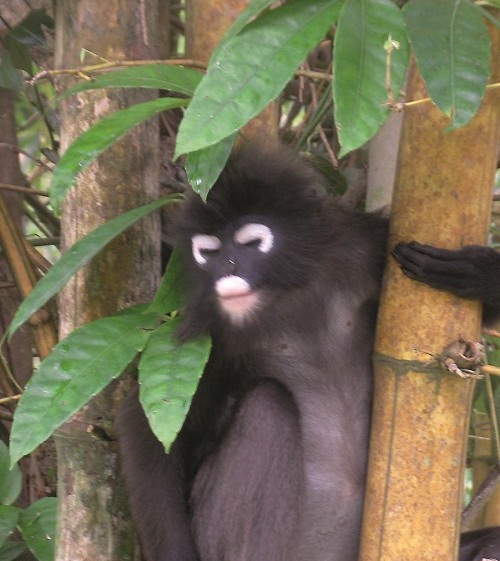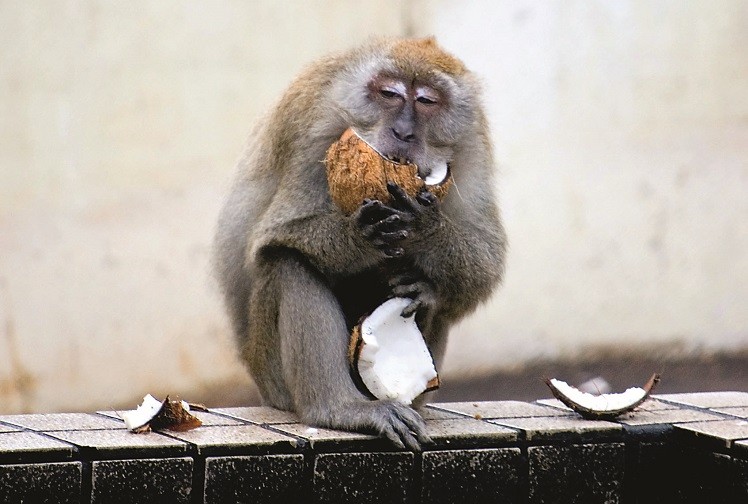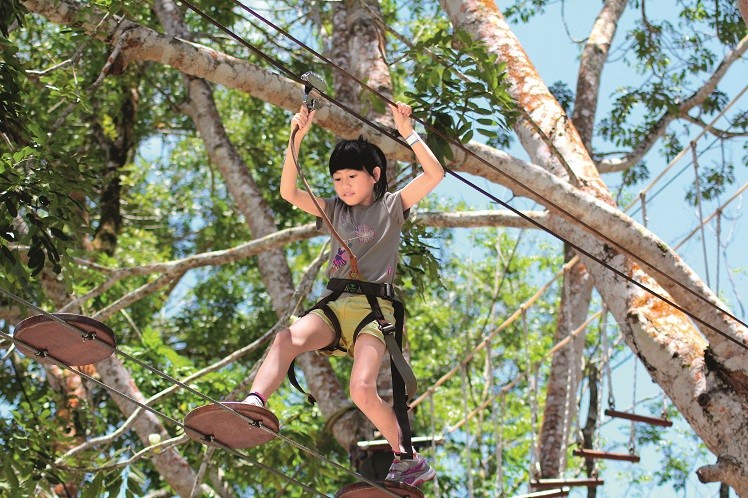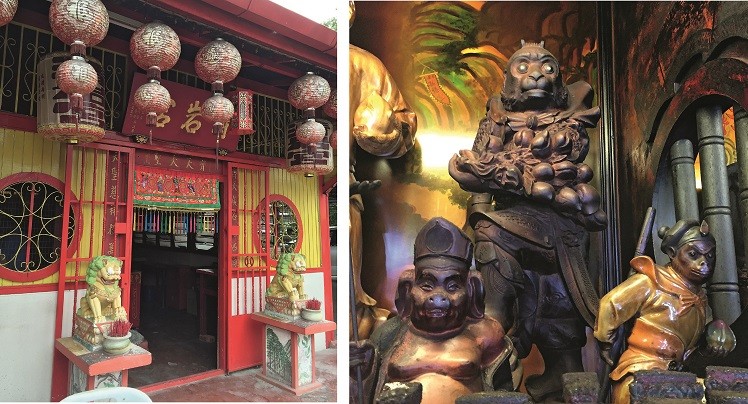This month’s Chinese New Year celebrations usher in the Year of the Monkey. Frances Wilks explores the mythology of this fascinating god and discovers the rich array of places where you can catch the vibrant Monkey energy in Penang.
Monkey Legends
Monkey, or Sun Wukong, is one of the most beloved gods of the Chinese pantheon for his outrageous chutzpah, his sense of mischievous fun, and his rebellious way of turning the established order of things upside down. He has a magical rod that can stretch to Heaven or Hell or become as small as a matchstick.
He also has the ability to shape-shift himself into 72 different animals and birds – and even into a building. He can create clones of himself from his own hairs. But it’s his irrepressible personality that makes him such a special god. When he is given the rank of Master of the Horse by the Jade Emperor who rules Heaven, he wanders into the Empress’s Garden where he finds some delicious peaches which she’s been saving for a very special party.
 The peaches, which take thousands of years to ripen, confer immortality. Monkey eats most of them just because he likes the juicy taste which causes great fury among the Heavenly Hierarchy.
The peaches, which take thousands of years to ripen, confer immortality. Monkey eats most of them just because he likes the juicy taste which causes great fury among the Heavenly Hierarchy.
But now he can’t be killed because he’s immortal and so he’s given a very high rank of “Great Sage, equal to Heaven.”
One of the best known sources of Monkey’s mythology is the Journey to the West which describes Monkey’s travels with the monk Xuanzang to retrieve the sacred Buddhist sutras from India.
They are accompanied by Pigsy, Horsy, and Sandy, who all have rather chequered pasts and who, together with Monkey, get into all sorts of adventures.
The “West” is not Europe as you might imagine but India. But India is likely to be Monkey’s origin anyway. The Hindu god Hanuman, an avatar of the great Lord Shiva, is often considered one of the most powerful and intelligent of the gods. His most famous feat, described in the Ramayana, was leading an army of monkeys to fight the demon King Ravana.
Like Monkey, he was impossible to defeat in war, and a lover of fruit – early in life he tried to eat the sun, believing it was a mango. But whether Indian or Chinese, Monkey’s strength, agility, and barefaced cheek will be a delightful energy in the coming year.
Monkey Locations
If you journey to the west of the island, you will find Monkey Beach, situated in Penang National Park. It offers clean sands and good swimming (but beware of the jellyfish) after a hike of some difficulty. Make sure you have trainers or suitable footwear and are carrying plenty of water before you attempt it.
If in doubt of your fitness level, it might be a wise option to take a boat to the beach. You are likely to encounter monkeys on the path, and almost certainly on the beach so be careful not to leave any open bags unattended or you might find your cell phone or your sandwiches missing.
Nearby, in Telok Bahang, at the innovative eco-theme park ESCAPE, there is a tree walk, called Monkey Business, with ziplines and different levels of challenge where you can move branch to branch just like a real simian. You can also climb trees (with the safety of a harness) and get the full primate experience.
After all that exercise you might well want a little relaxation and refreshment. The Tree Monkey Restaurant at the Tropical Spice Garden on the road between Telok Bahang and Batu Ferringhi is a delightful watering hole.
Although hole isn’t perhaps the right word for an outdoor café that seems to hang in the trees above an azure sea. The cuisine is Thai and delectable. Make sure that you leave enough time to visit the Spice Gardens as well. There may or may not be monkeys but there will be spice terraces and bamboo groves.
One garden that you can be sure of seeing monkeys in is the Monkey Gardens in Waterfall Road. Actually that’s the old name for them, they’re now much more respectably known by their proper name, the Botanic Gardens. But in the past you could motor through the gardens; it was a bit like driving through a safari park but with monkeys instead of lions.
They would jump on the cars, twang the windscreen wipers, and run off laughing. Nowadays the monkeys are more peaceful, the brown capuchin monkeys more playful, the grey, white eyed Dusky Leaf monkeys more contemplative.
If you want monkey energy without the bother of actual monkeys, then there are several options. Head to the Monkey Cup Garden on Penang Hill. It’s about a mile’s walk from the top of the funicular railway but its cool and shady. If you’re feeling lazy you could take the one of the many golf buggies that ply the route.
The Monkey Cup Garden doesn’t actually have any monkeys but it does have a wonderful collection of nepenthes or pitcher plants. They are carnivorous plants which trap their prey, usually insects or very small animals inside a deep cavity filled with liquid. Monkeys have been known to open the plant’s lid and drink the contents of its pitcher – perhaps a sort of jungle cocktail on the go.
But to see the actual monkey god himself you will have to go to his only temple in Penang. It’s part of the Chew Jetty and is on Weld Quay opposite the Patio Tapas Bar (another excellent watering place). The temple itself is sixty years old and one of those charming small places that seem to embody a traditional Taoist spirit.
You can see some of the avatars of Monkey (including several of him holding his magical rod and eating a stolen peach) as well as statues of his companions on the Journey to the West. There are plants to extend the temple which is understandable but the old wooden building is an absolute gem of Penang folk religion.
You might like to drop in and wish him happy birthday one of his (two) birthdays falls on the day after Chap Go Mei (the conclusion of Chinese New Year) on 23 February.
Your final port of call might be the Sam Poh Temple in Batu Maung. Although the temple is only about twenty years old, the large footprint in the rock is much older.
The local Hindus believe that the print was caused when Lord Hanuman, the original monkey god set fleeting foot on this island. The Chinese believe it was the Ming Dynasty Admiral Zheng He’s footprint as he travelled around South East Asia with a massive fleet of sailing vessels in the fifteenth century. The Malays, on the other hand, believe that it’s the footprint of the mythical giant, Sang Gedembai.
Whatever the truth may be there will definitely be a celebratory puja at the temple for Lord Hanuman on 16 April this year.
This article was originally published in The Expat magazine, which is available via a free subscription.
"ExpatGo welcomes and encourages comments, input, and divergent opinions. However, we kindly request that you use suitable language in your comments, and refrain from any sort of personal attack, hate speech, or disparaging rhetoric. Comments not in line with this are subject to removal from the site. "






















Biggest example is the CM Lim Guan Eng aka Tokong